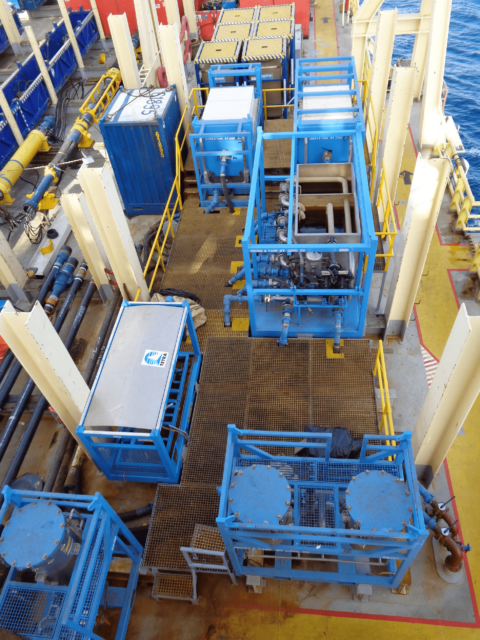Combined Fluid Management Adds Value to P&A
By Martin Johnston | Business Development, Eastern Hemisphere | October 27th, 2021

At the end of an oil and gas field’s life, the owners of the installation and pipelines are required to fully decommission that field. As in other regions of the world, in the United Kingdom a decommissioning programme must detail the equipment, infrastructure, and materials that have been used for drilling, completion, and production activities. As part of this process, any well that has been drilled must be plugged, abandoned, and left in a condition that meets the requirements set out by the Oil and Gas Authority (OGA) and the Petroleum Act 1998.
What does it take to plug and abandon a well?
Plug and abandonment (P&A) operations require multiple steps to fully isolate the reservoir, and these can often take weeks to fully execute. Typically, plugging and abandoning a well consists of evaluating the wellbore, killing the well by bullheading the in-situ fluids (including any hydrocarbons in the well), removing production tubing and completion equipment, evaluating the casing’s integrity and, if required, cutting and pulling it to the surface, placing cement plugs in the wellbore, cutting and removing the conductor, and finally installing an environmental barrier in the form of a surface plug to ensure the well remains completely isolated from the surrounding geology.
The Value TETRA Brings to Fluid Management
One of the primary challenges of P&A operations is fluid handling. It is not always possible to bullhead the existing fluid in the well (that is, forcibly pump it into the formation), so instead the well volume must be displaced out of the hole and brought to the surface. In most cases, these wells contain highly contaminated fluids that have been in place for many years. TETRA adds significant value to plug and abandonment operations through the ability to offer combined fluid management services, where not only is a solution provided for handling fluids at the surface, but also for reclaiming these fluids for reuse or disposing of them safely within environmental limitations. TETRA’s specialised chemicals, filtration services, and experienced personnel provide a ‘one-stop shop’ for fluid handling, treatment, reclamation, and disposal. In Northeast Scotland alone, TETRA has three brine plants with a combined capacity of 36,000 barrels. This allows TETRA to present a unique opportunity to our clients whereby any clear brine fluids in wells can be returned for reclamation and credit to the client. Plug and abandonment operations entail significant expenditure for an operator, so having the ability to offer reclamation and a subsequent credit in exchange for the fluid further enhances the value TETRA provides.
Combining TETRA Services Means Safe, Successful Operations
The combination of services that TETRA provides assures effective fluid management from arrival at the rig site to the duration of the plug and abandonment operations, and in some cases includes the onshore reclamation of fluids after plug and abandonment operations are completed. With our extensive track record of success in P&A operations, the case study, Time-Saving and Effective Cleanup for North Sea Abandonment Project Saves Operator Millions and the customer testimonial below highlight the success of combining specialised chemicals, filtration services, and experienced personnel. This project from which the case study and testimonial come had many challenges, but ultimately TETRA’s combined services enabled a safe and successful completion of the campaign, even doing so five months ahead of schedule.

Figure 1 – Custom Fitted Ergonomic Filtration Spread
P&A Customer Testimonial
“The TETRA contribution to our fluids management was considerable. The TETRAClean pills made for a clean pull of the tubing and more efficient cement barrier placement, and filtering the contaminated sodium bromide was very cost effective. Additionally, TETRA personnel, both onshore and aboard the rig, were proactive and flexible, making for a highly efficient project with industry-leading safety metrics.”
— Operator’s Drilling Superintendent



